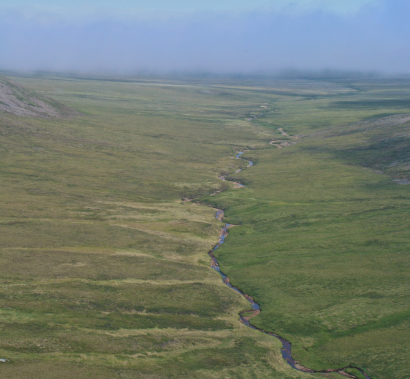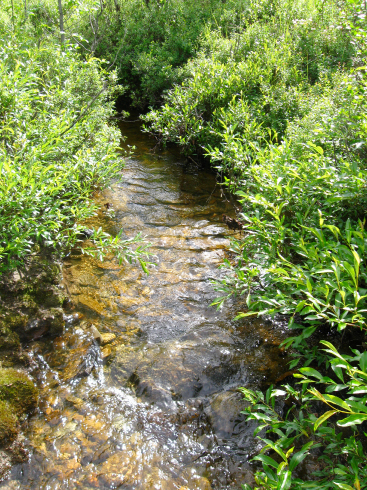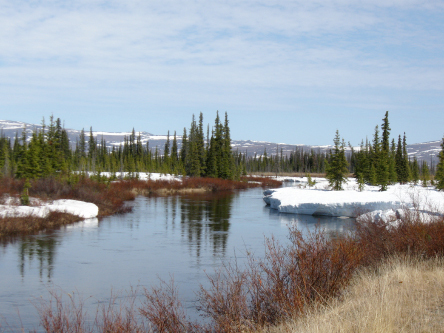Research
 |
Coupled hydrology and biogeochemistry of arctic hillslopesStream networks are poorly developed in arctic catchments, and hillslopes are primarily drained not by stream channels, but by water tracks, linear preferential flowpaths that connect surface and subsurface soils to the valley bottom and stream networks. As such water tracks may propagate the biogeochemical consequences of changing precipitation and thawing permafrost to downstream ecosystems or they may mitigate such changes by transforming or retaining materials. In this project we are evaluating the hydrology and biogeochemistry of water tracks. In collaboration with hydrologists (Sarah Godsey- ISU, Mike Gooseff- PSU), we are determining how hydrologic gradients, sources of water, and storm hydrograph responses change with thawing of the soil profile. We are concurrently estimating fluxes of solutes, as well as estimating rates of nutrient uptake within water tracks. As a preferential flowpath, water tracks offer the opportunity to quantify nutrient spiraling parameters, and compare the relative importance of reaction and transport for solute fluxes from hillslopes. Field work for this project is based out of the Toolik Field Station. |
|
 |
Scale, consumers, and lotic ecosystem rates (SCALER)In this cross-biome project, we address two central questions in stream ecology: 1) How do ecosystem processes scale up from sub-reaches to whole stream networks? and 2) How do consumer removals, a predicted consequence of climate change, influence ecosystem processes and spatial scaling? We are undertaking fish removal experiments, synoptic sampling, and network-scale modeling at the Caribou-Poker Creeks Research Watersheds, with a focus on responses of nutrient uptake and whole-ecosystem metabolism. Results in the boreal forest will be compared with those from 5 other biomes across North America. |
|
 |
Sources of nitrate to high latitude streamsHydrology and biogeochemistry of arctic ecosystems are changing, resulting in deeper hydrologic flowpaths through catchments, and elevated fluxes of inorganic nutrients. Although such changes have occurred concurrently with thaw of permafrost and increased air temperatures, the mechanisms underlying elevated exports of nutrients, particularly inorganic nitrogen N as nitrate from N-limited catchments, remain unclear. We are using stable isotopes of N to estimate the contributions of catchment and atmospheric sources of N, and to quantify N transformations in soils across catchments that vary in permafrost extent and depth of dominant flowpaths.
|